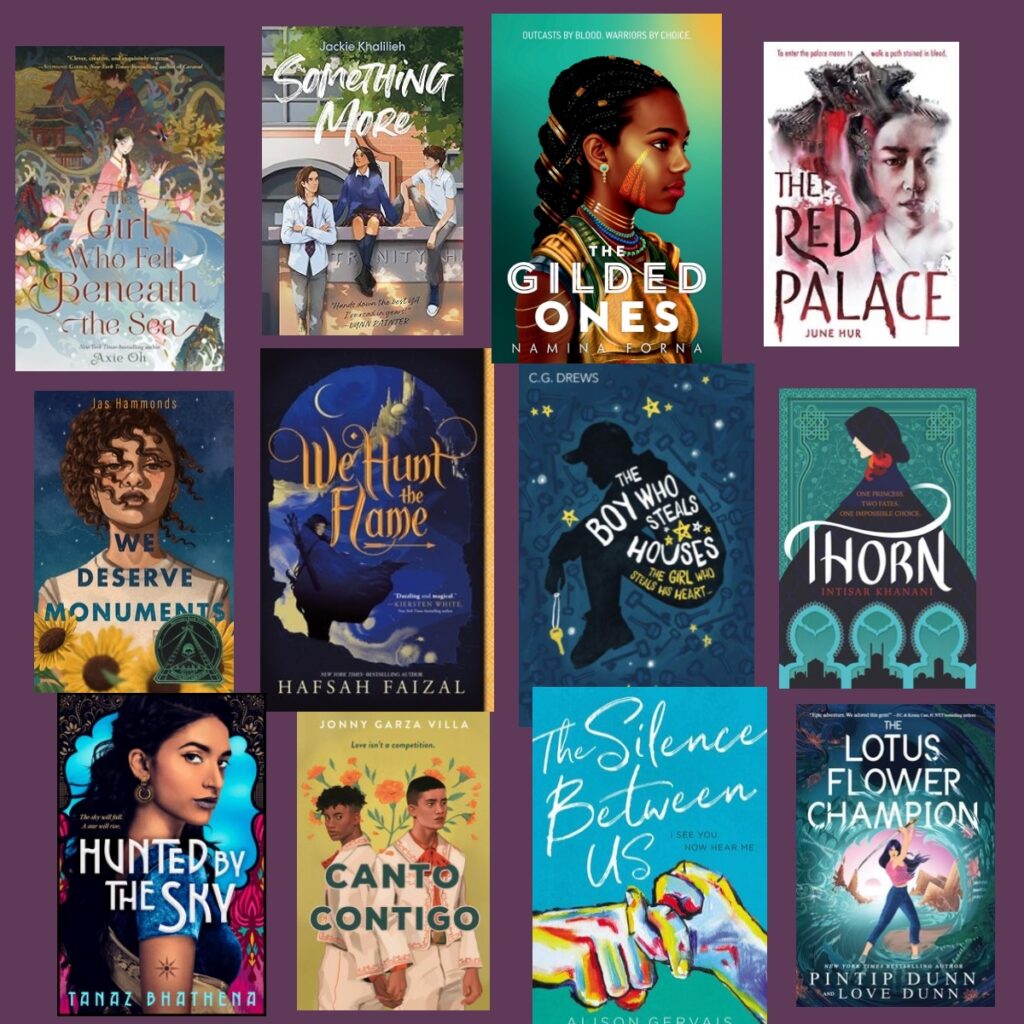“Teenagers. Everything is so apocalyptic.”
—Kami Garcia
Author Kami Garcia hit the nail on the dramatic head with that line from her novel Beautiful Creatures. We can all relate to it because each of us was a teenager once. Our teen selves still live inside us. The proof? How much we tend to like the music from our teenage years (still love Bon Jovi) and how often we share memes that fit our specific age group (‘80s hair. Wind didn’t stand a chance!). Those few years of our lives are pivotal in forming who we will be as adults. They are a bridge from childhood to adulthood, not existing entirely in either of those worlds. Adolescence is filled with raging hormones, peer pressure, maybe being bullied, certainly being embarrassed to stratospheric levels, and trying to figure out exactly who we are as individuals, separate from our parents and siblings.
What exactly is YA fiction?
YA is typically written for readers ages 12–18 with protagonists in that same age range. YA fiction sits in between Middle Grade, for readers 8–12, and New Adult, that can be more graphic in various ways and which is targeted toward readers during their college/post-high school years as they move from their teens into and through their 20s.
“Young adult novels, at their essence, are about self-discovery, and oftentimes that discovery will surprise even the protagonist,” said YA author Pintip Dunn, who is traditionally published. “These characters are on the cusp of the person that they will become for the rest of their lives—and the potential feels limitless. I think this is a crucial moment in a person’s life, and I love witnessing the hope that burns brightly, in spite of the angst, in defiance of the fear.”
Why YA?
Novelists often experiment with different types of fiction before they find the one that really clicks with their voice. Such was the case for Dunn, but then she read The Hunger Games in the fall of 2010 and she says that changed her life forever.
“I knew that this was the kind of story I wanted to tell, a story about a protagonist faced with impossible challenges who rises to the occasion because they are stronger, braver, and more resilient than they ever dreamed possible,” Dunn said. “I sat down and immediately read 60 YA novels to familiarize myself with the genre. And then, in early 2011, I started writing Forget Tomorrow.”
For Brenda Hiatt, a period of burnout after publishing several historical romances on too-tight publisher deadlines led to her writing YA and indie publishing them.
“I started reading YA fiction for fun,” Hiatt said. “After a few months (and several books), I realized I was enjoying them more than anything else I was reading, so decided to try my hand at writing one, mostly for fun. And it was! That series is now 11 books and counting.”
Pros and cons of writing YA
One obvious con of writing YA is that the target market ages out and moves on to other genres. Sure, plenty of adults love to read YA. Some even prefer it to other genres, either for nostalgia reasons or because YA is home to fantastic, varied storytelling.
“Young adult novels contain intense emotions because it is a time of so many firsts—in particular, first love, and sometimes even first kiss,” Dunn said. “I think it can be fun for adults to relive those moments. I also believe adults can find these stories inspiring, as they remind us of a time when we believed that anything and everything was possible.”
YA’s variety is attractive to authors as well as readers. It has fewer strictures than many other genres while telling those types of stories. In fact, you can find pretty much any genre you like to read on bookstores’ YA shelves.
“One of my favorite pros is that the young adult category allows me to write in so many genres,” Dunn said. “I have published sci-fi, thrillers, rom-coms, and fantasy novels—all under the YA umbrella. I love to challenge myself and try something new with every book that I write, and YA has allowed me to do that.”
Hiatt said that she loves that her YA characters can be more emotional than would be believable in an adult romance since teens feel things so intensely.
“The market, however, is … tricky. It’s extremely difficult for indie-pubbed books to make their way into the places teens tend to find books, like libraries and schools.”
An interesting fact about Hiatt’s YA readership is that she estimates 75% of them are adults.
“Not all readers who prefer to avoid sex, violence, and profanity in their reading material want Christian fiction,” Hiatt said. “YA fills that gap nicely. It’s also much easier for indie-pubbed YA authors to target the adult market than the teen market.”
That’s not to say that all YA novels don’t have any of those edgier aspects. Like adult novels, they can vary in their levels of explicitness in all three areas.
What’s hot?
“One of the best parts of selling into the YA market is there are a lot of opportunities to really find your path as an author,” agent Michelle Grajkowski of Three Seas Literary said. “Romance, especially contemporary and romantasy, are selling really well. I think the door will be opening soon for paranormal, and thrillers are always a big hit.”
Grajkowski added that the market is changing in interesting ways that will hopefully keep young adults reading.
“Graphic novels, for example, are really taking over the market,” she said. “Young adults are really tech-focused and seem to like to read things in small bits, so being able to pair a strong story with wonderful illustrations has really opened the market to new opportunities, and has paved the way for reluctant readers to read! Another fun tidbit is that young adults still love to have books in their hands. While we’ve seen a huge uptick in indie publishing for the adult market, the YA market seems to be driven by the traditional houses.”
A scan of the Teen/YA bestseller lists will give evidence of this, but there are definitely great self-published YA titles and series that get noticed—especially if they get traction on BookTok, a niche community on TikTok.
Circana reported that YA had another good year in 2023, driven by purchases of dystopian, romance, and thriller books.
Tips for writing YA
Authenticity is very important to teen readers. They want the stories to feel real to them, even if the story is set in space, the past, or a fantasy realm. Though adults read YA and the majority of YA authors are adults, it’s important to remember who the core audience is and what their current lived experiences are—not those of the author when they were a teenager, though there can be some overlap.
“I’ve never ‘written down’ to a teen readership in the sense of using simpler words or writing style, though my YA voice is of course very different from my historical voice,” Hiatt said. “Listen to contemporary teens to get a feel for what matters to them today, how they talk. I try to stay away from current slang or too many cultural references, as those can quickly date a book.”
Dunn pointed out that just having a teenage protagonist is not enough. To get a feel for what makes up today’s YA, Dunn suggested reading a lot of books like she did before putting your own words on the page.
Positive progress
Dunn says an extremely good change the YA market has undergone is that publishing has embraced diverse stories about diverse characters.
“I am so proud and honored to be able to write stories about characters who look like me—something that was severely lacking when I was growing up,” she said. “Some of my covers, especially, feature beautiful Asian heroines who are at the center of their stories. If I had seen a book cover like that, or read a story with that kind of representation, when I was younger, it would’ve gone a long way towards making me feel less othered.”
Dunn wants to see the new embrace of diverse stories continue to the point that they are normalized.
“Diversity isn’t a trend; it’s not—or shouldn’t be—a ‘thing’ that’s hot for a while.”
Also great are the phenomenal covers I’ve seen on YA novels with minority or marginalized protagonists. An awesome cover can draw in a potential reader who might not have otherwise picked up the book. The hope is they then read the blurb and take the book straight to the checkout. The examples in this graphic are but a small sampling.

Variety is the spice
Whatever genre of fiction you enjoy reading and writing, chances are you will find books that fit your taste on the YA shelves. You might enjoy the stories so much that you feel compelled to write your own. And those of us who love reading YA will be here waiting when you’re finished.
________________________
Trish Milburn has published six YA novels—three paranormal and three contemporary romance—and has lots more ideas bouncing around in her head. She almost always is reading at least one YA novel.

